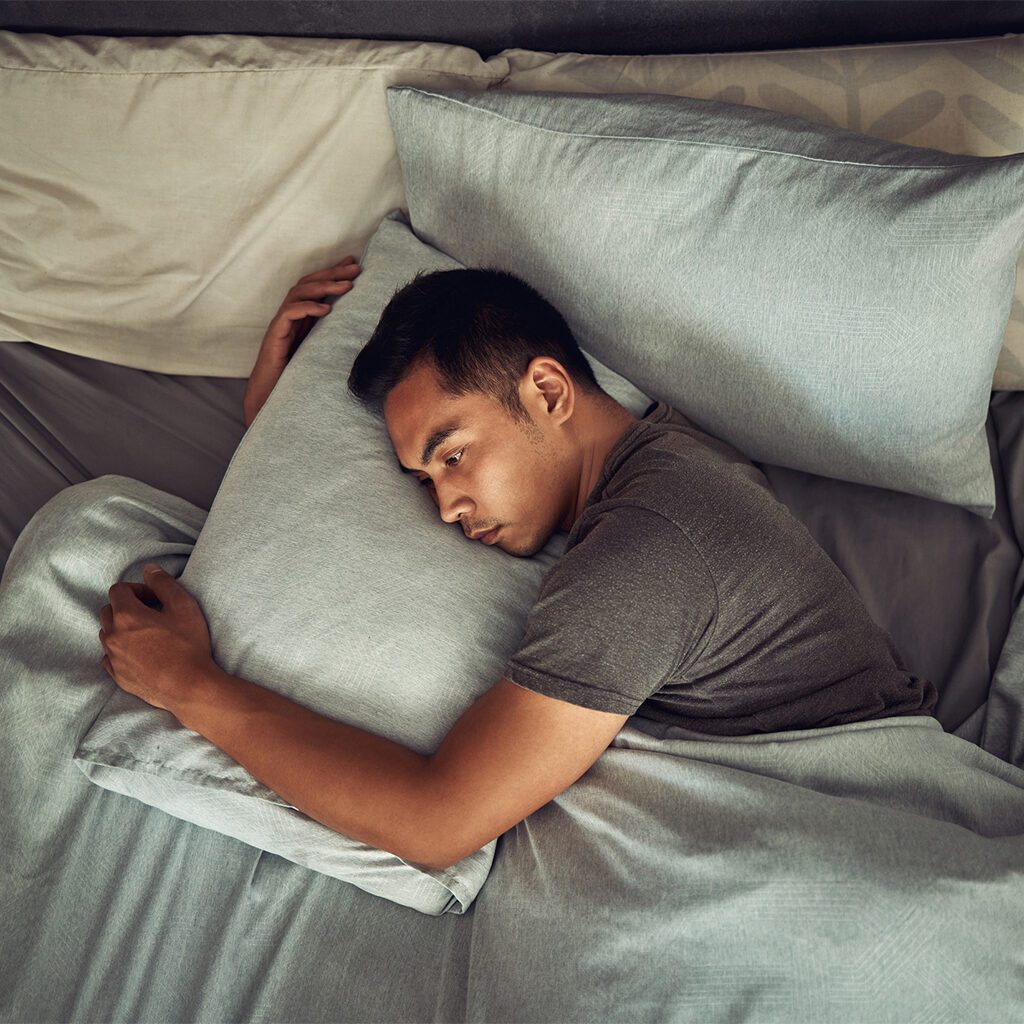The Importance of Sleep Health
Ever had trouble concentrating on a work assignment or mustering up the energy for your afternoon workout? If you’re sleeping fewer than six hours a night, it’s likely your suffering from poor sleep health. And unfortunately, a bad night’s sleep can cause more than a bad mood – it can affect relationships, hinder memory and concentration, and even lead to heart disease and depression.
How Much Sleep Do You Need?
- Newborns (0-3 months): 14-17 hours
- Infants (4-11 months): 12-15 hours
- Toddlers (1-2 years): 11-14 hours
- Preschoolers (3-5 years): 10-13 hours
- School age children (6-13 years): 9-11 hours
- Teenagers (14-17 years): 8-10 hours
- Younger adults (18-25 years): 7-9 hours
- Adults (26-64 years): 7-9 hours
- Older adults (65+ years): 7-8 hours

Why We Sleep
Everyone likes waking up in the morning feeling refreshed, but did you know that sleep has health benefits far beyond an energy refill? “Sleep plays a critical role in optimizing good health and well-being throughout our lives,” explains Dr. Tareck Kadrie, a neurologist with the Erlanger North Sleep Disorders Center. “Getting good, quality sleep can help protect physical health, mental and emotional health, safety, and quality of life.”
Throughout the day, our noggins make many neural connections, but they’re not all worth retaining. When we sleep, our brains eliminate the unwanted connections, which helps us consolidate memories. “Sleep helps your brain work properly. Memory, recall, concentration, and productivity are all reduced with sleep deficiency,” says Dr. Kadrie.
Sleep also helps regulate metabolism. “Sleep is intricately connected to a variety of hormonal and metabolic processes in the body and is important in maintaining metabolic homeostasis,” explains Dr. Daniel Smith, medical director and managing partner at Specialists in Pulmonary Care and The Chattanooga Sleep Center. “Research demonstrates that sleep deprivation and sleep disorders may have deep substantial metabolic and cardiovascular implications.” A poor night of sleep dulls activity in the frontal brain lobe, which is responsible for impulse control and decision-making. Not only does research suggest you’re more likely to indulge in high-carb snacks and other comfort foods when you haven’t had sufficient sleep, but a lack of Z’s also causes cortisol (a stress hormone) to spike. This throws your metabolism out of whack, making your body think it needs to hold on to fat. Poor sleep can even affect your body’s metabolic reaction to insulin, which can eventually lead to type 2 diabetes.
Adequate sleep even helps keep our immune systems working efficiently so we can ward off germs, and it reduces our risk for high blood pressure, heart disease, and stroke.
The Stages of Sleep
Sleep is driven by a combination of factors, the first being the sleep-wake homeostatic drive. This affects how long we sleep, and also how deeply. The second part of the puzzle is circadian rhythm. “Circadian rhythm is a 24-hour internal clock that runs in the background of our brains to control our wake and sleep cycle,” says Dr. Kadrie. It uses environmental cues to let our bodies know when to sleep, and it’s regulated by cortisol and melatonin, the sleep hormone.
When these two systems are working together efficiently, you fall asleep. Good sleep consists of four different stages, and each serves a different function.
N1: Non-REM (Rapid Eye Movement) Sleep
This is the stage where you’re falling asleep. Your muscles will begin to relax, and your heartbeat, breathing, and eye movement will slow. Your brain activity is also beginning to slow, but it’s still easy for you to be awoken.
N2: Non-REM Sleep
In this stage, your body temperature and heart rate drop even more, and your eye movement stops completely. Your brain will also slow down more, making it more difficult to wake up during this phase. “Stage N2 comprises the largest percentage of total sleep time in a normal middle-aged adult, typically 45-55% of the night,” says Dr. Smith.
N3: Non-REM Sleep
This is the deep sleep phase that is most restorative to your body. Heartbeat and breathing slow the most during this phase, and it’s hard to wake up. (Ever taken a nap and woken up to your alarm even more tired than when you fell asleep? Maybe you’re even a bit disoriented? It’s likely you were in N3.)
REM Sleep
Your brain activity speeds up considerably in this stage, and your eyes begin to dart back and forth beneath your eyelids. Dreaming is most likely to occur during this stage, though the muscles in your arms and legs become temporarily paralyzed during REM sleep to keep you safe. Your heart rate and blood pressure will also begin to increase.
The Dangers of Disorders
Unfortunately, as important as quality sleep is, it’s not always so easy for everyone. Reports suggest that 70% of Americans between ages 20 and 59 have sleeping difficulties fairly regularly, and more than 50 million adults suffer from a specific sleep disorder that affects their daily life.
Certain sleep disorders may arise due to an underlying medical condition, while others may stem from extreme stress, hectic schedules, or other influences. They may make it hard to fall asleep or stay asleep, leave you with extreme fatigue throughout the day, or lead to irritability.
There are approximately 80 different sleep disorders that plague individuals daily, but the most common include:
Insomnia
With this condition, you have trouble falling asleep or remaining asleep. Everything from stress to digestive issues can trigger it, and it can affect many different aspects of your life, from your weight to your mood.


Sleep Apnea
Your airway becomes restricted and breathing sporadically pauses with this serious condition. Because of that, your body takes in less oxygen, which can cause you to wake up frequently. It is often classified by loud snoring or choking noises, and in severe cases, it can happen hundreds of times a night. “Children can have sleep apnea too, and it’s linked with ADD and ADHD,” says Dr. Anuj Chandra, medical director at the Advanced Center for Sleep Disorders. “In many cases, treating the sleep apnea will allow the child to get off their medications, since their concentration and memory issues are caused by a lack of sleep.”
Restless Leg Syndrome
Often called just RLS, restless leg syndrome is the overwhelming need to move your legs. It can happen day or night but is most severe at night, and it may be accompanied by a tingling sensation. “The key to living with RLS is managing the symptoms,” says Dr. Smith. “Lifestyle changes like limiting caffeine and alcohol, taking a hot bath, and initiating an exercise plan can help.”
Narcolepsy
For people suffering from narcolepsy, it can be very hard to regulate any sort of sleep-wake cycle. Surprisingly, it’s harder to diagnose than you might expect. “There is often a 15 to 30-year delay in diagnosis,” says Dr. Chandra. “It frequently starts freshman or sophomore year of college, but the classic presentation of a person just falling asleep at any moment is not realistic. Rather, it can be classified by poor sleep at night followed by many restorative naps throughout the day. If despite having slept six to eight hours a night you’re still needing naps, you should seek help from a doctor.”
REM Sleep Behavior Disorder (RBD)
With this, your muscles don’t become temporarily paralyzed while in REM sleep, so you may try to act out your dreams, sometimes shouting, hitting, and generally moving your limbs. This condition can be very dangerous, often leading to injury to yourself or your loved one.
Getting Your Best Sleep
If you think you might be suffering from a sleep disorder, the first step is discussing it with your doctor. He or she may recommend you complete a sleep study to find out what you’re facing.
Beyond that, there are steps you can take at home to improve your sleep. Consider sticking to a strict sleep schedule – even on the weekends, practicing a bedtime ritual, and turning off all electronics two hours before bed. “The blue light from electronics disrupts and destroys the melatonin molecules,” explains Dr. Chandra. “Most phones have a night feature that blocks blue light, but certain apps and blue-light-blocking glasses are also available.”
Forego alcohol and caffeine long before it’s time to hit the hay too, since those substances are the biggest sleep stealers. Finally, make your bedroom a relaxing escape. Choose calming colors for your walls, bedding, and accessories, and keep your thermostat between 60 and 67 degrees. Consider a white noise machine, and splurge on mattresses and pillows that you find comfortable.


Dr. Tareck Kadrie
Neurologist, Erlanger North Sleep Disorders Center


Dr. Daniel Smith
Medical Director and Managing Partner, Specialists in Pulmonary Care and the Chattanooga Sleep Center


Dr. Anuj Chandra
Medical Director, Advanced Center for Sleep Disorders

